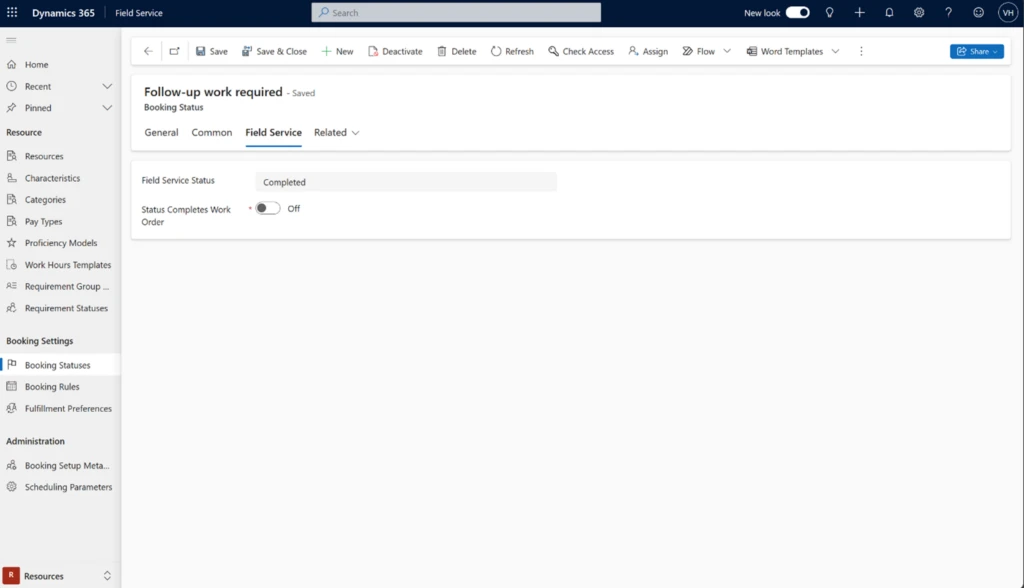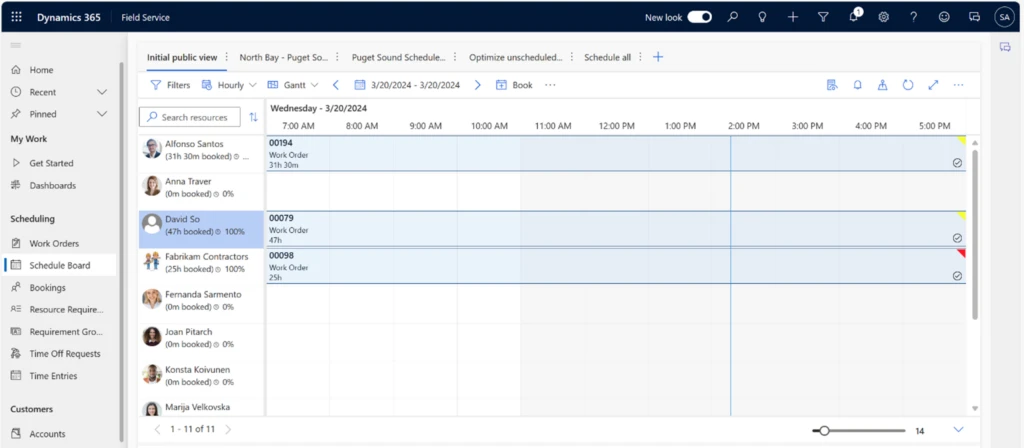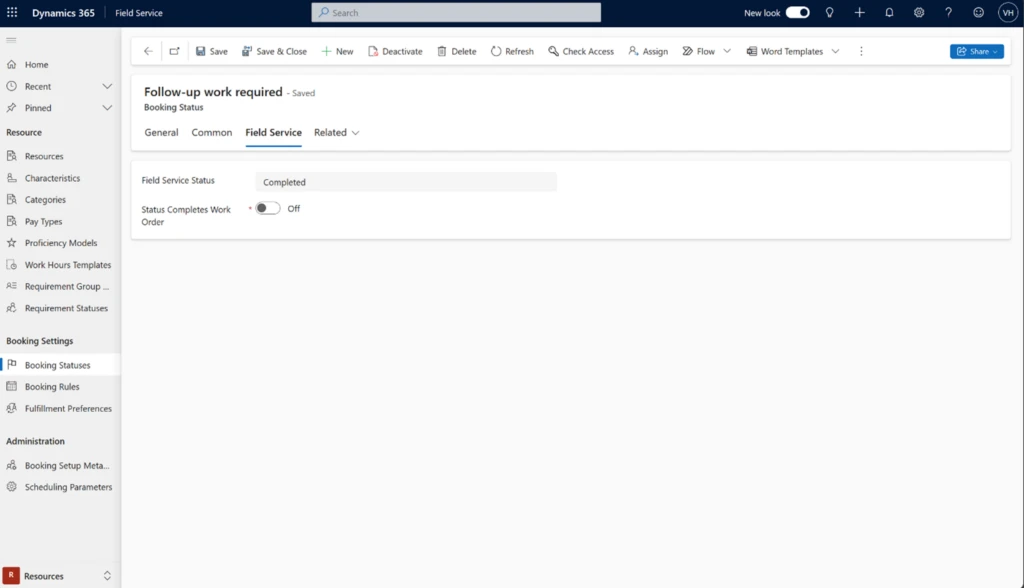Field service management is a complex process that requires seamless coordination among technicians, customers, equipment, and suppliers. To address these complexities, we have introduced two new capabilities in Dynamics 365 Field Service to make this easier.
The first capability, Complete Work Order by Status, allows field service organizations to use a booking status to indicate if further work is required to complete a work order. This feature gives technicians the flexibility to indicate when additional work is needed on a work order, streamlining the process for field service teams to gain better insight into the tasks required to fulfill a work order.
The second capability, Complete Booking While Preserving End-Time, ensures that when a booking is marked as completed by someone other than the assigned resource, the end-time value will no longer automatically update to the current timestamp. Instead, it will retain the end-time value of the booking. This helps ensure accuracy and consistency in the record-keeping process.
These features aim to optimize service delivery, reduce costs, and enhance customer satisfaction. Now, let’s explore each feature in greater detail.
Complete Work Order by Status
Why is it needed?
In the Field Service industry, it’s not uncommon that what begins as a routine service request can morph into a complex task, requiring multiple follow-up visits to finalize a work order.
Consider a scenario where a commercial building is experiencing recurrent refrigerant leaks from its rooftop HVAC unit. Typically, these leaks are addressed by replacing a worn-out seal. However, upon closer examination, it becomes evident that the evaporator coil is corroded and requires replacement. This insight only emerges once the field service technician arrives on site. Typically, when this occurs, technicians find themselves without the required parts for immediate repairs. This results in the need to contact suppliers, procure necessary parts, and schedule follow-up visits—unforeseen tasks not factored into the initial work order creation. In this scenario, the technician would close the booking while still needing to acknowledge the need for a follow-up visit to complete the work order.
Previously, field service teams encountered challenges in accurately reflecting this information without implementing custom logic. However, with the introduction of the “Complete Work Order by Status” feature, these unexpected visits can now be effortlessly marked as requiring follow-up by utilizing a booking status to indicate the need for further work to fulfill the work order.
How it works?
To configure this feature, administrators should access the Resources section within Dynamics 365 Field Service. Navigate to Booking settings and choose Booking Status. Here, administrators can either select an existing completed status or create a new one. Next, administrators should navigate to the Field Service tab within the selected booking status. Within the “Field Service Status” dropdown, update the “Status Completes Work Order” toggle to “off”.

Upon adjusting this setting, technicians can utilize the newly configured booking status to indicate both the completion of a booking and the need for follow-up work on the associated work order. This adjustment optimizes the workflow for field service teams and enhances their understanding of the tasks necessary for work order fulfillment.
Complete Booking while preserving ‘End Time’
Why is it needed?
Field Service technicians are the backbone, tirelessly striving to meet deadlines, resolve customer issues, and ensure tasks are completed promptly. However, amidst their hectic schedules, oversights may arise, such as neglecting to mark a job as “completed” once finished. In such cases, dispatchers or field service managers step in to manually update the booking status on behalf of the technician.
For example, a dispatcher schedules a repair job from 1:00 PM to 2:00 PM. Despite an unforeseen delay, the technician completes the task at 2:00 PM but forgets to update the booking status to “completed.”
The dispatcher later notices the oversight and manually marks the booking as completed at 9:00 AM the following day.
Previously, this would inaccurately reflect a job duration of 19 hours, with the end time value set to 9:00 AM. With the implementation of the new “Complete bookings while preserving end-time” logic, when a user other than the assigned resource updates the booking to complete on behalf of the technician, the original end-time value of 2:00 PM is maintained.

How it works?
Exciting update: No setup is needed! When a booking is marked as completed by someone other than the assigned resource, the end-time value will no longer automatically update to the current timestamp. Instead, it will retain the end-time value prior to completion. This ensures accuracy and consistency in the record-keeping process.

We’re eagerly anticipating your experience with these new updates! Feel free to share your thoughts with us.
Share Your Feedback for Continuous Improvement
These new capabilities for Dynamics 365 Field Service are designed to simplify tasks for technicians and empower field service teams with enhanced tracking abilities for work orders and bookings. These advancements offer precision and efficiency, driving improvements in service quality, cost reduction, and customer satisfaction.
Explore more on Dynamics 365 Field Service documentation and share your feedback within the Field Service product or via our ideas portal. Your input drives continuous improvement for enhanced operational performance.






